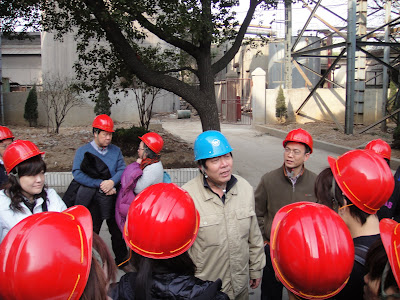Met at the classroom block at 8.10am to collect our helmets and board the bus with the ECE group to the Steel Mill factory. The bus journey was about 30 minutes. On our way there, the assistant of the Steel Mill factory went down to help us register at the registration building and then continue our journey towards our destination. We were given a brief information of the factory outside and then proceeded inside to see the whole process of how the steel material are generated. The overall process and history of the factory are very interesting.



I've observed that the firm is divided into several parts such that the management of researching, stocks and shares are at different places along the journey.
Wuhan Steel Mill Factory is founded in 1974 with Japan. Initially, the firm was afraid that it may close down because of inefficiency and low level of resource. However, surprisingly, the firm survived for several years till today because Japan thinks that China can still maintain as a rich country and that their economy will be increasing gradually over the years. at 1978, 12December, the firm made the first roll of steel.
The process of making the steel includes burning, cutting, washing and even flattening took about 1 minute, whereby the distance of the whole process is about 1.5km, but they minimized it into 800m.
Process:
The furnace is set at a very high temperature and used to burn the metal into stainless steel. After which, it is flattened with the used of the machine, where the maximum number of time for it to flatten is 5 times but 3 times is needed only, and washed through the water pumped by the motor to enable it to be clean for rolling into a coil. A quality check is used to ensure that the metal produced are of an optimum condition. Lastly, it is then sent to the truck for delivery.

The very hot metal that just came out from the furnace.
 The ready-made steel.
The ready-made steel.



On the classroom level, whereby out of sudden, a pile of rubbish is found on the ground.

Reflection:
I felt that Singaporeans are actually very fortunate that we have no one-child policy or any policy that are against of having to give birth to more than one child. On the other way round, Singaporeans are given incentives when giving birth, such that it increases according to the number of child instead of like in China, they have to pay the country for another recognised identification if more than one child is given birth to. Therefore, since the population in Singapore is so much smaller, we should learn to appreciate and consider on the child planning for future.

